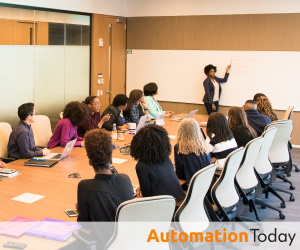
The potential cost savings and productivity gains associated with using software to automate business processes have always caused concern among workers and advocates for human labor. Businesses that want to share in those benefits by implementing intelligent automation solutions must be cognizant of the negative publicity that can accompany impacts to human employees. And, as software automation and AI-based automation solutions gain traction, and more positions are eliminated, organizations need to prepare for a possible increase in that kind of fallout.
Hugh Taylor, a former IBM marketing executive, current freelance writer and tech evangelist, writes that after 20 years of minimizing AI’s potential to effect employment, generative AI has caused his writing gigs to dry up. His message over those two decades was that AI and “its practical cousin, Robotic Process Automation” would “liberate employees from drudgery and enable them ‘to do more meaningful work,’ or words to that effect.”
While Taylor’s situation is the result of generative AI affecting creatives and not intelligent automation software automating business processes, he is a credible deliverer of this message due to his background. There will be hard feelings as digital transformation continues to evolve and take root in more businesses.
Organizations must plan for more publicity in the media about automation-related job losses driving organized opposition to AI and intelligent automation initiatives.
There are steps employers can take to make employees who are worried about losing their jobs to automation feel safe and valued in the workplace. Here are some strategies companies can implement to address concerns, reduce anxiety and possibly boost morale, productivity, and retention when introducing automation:
- Open and transparent communication is the most important consideration. Employers should regularly communicate their automation plans, goals, and strategies to employees. Provide clear information on how automation will complement, rather than replace, human workers. Emphasize the collaborative nature of automation and human work.
- If you can, invest in training and development programs to help employees acquire new skills that are relevant in an automated world. Offer opportunities for employees to learn about automation technologies and give them the time to pursue additional education or certifications.
- Explore ways to redesign jobs so that they focus on tasks that require human skills, creativity, and emotional intelligence. Encourage employees to add their insights to this process and involve them in the decision-making process regarding automation.
- Consider implementing measures to enhance job security, such as offering longer-term contracts or guarantees of employment stability during the transition to automation. Explore options like job sharing, reduced work hours, or flexible scheduling to accommodate employees during times of uncertainty.
- Create clear career pathways that show employees how they can progress within the company, even as automation advances. Highlight opportunities for advancement, promotions, and increased responsibilities for those who adapt and acquire new skills.
- For employees who are or may be affected by automation, help them find new opportunities within or outside the organization. Offer career counseling, resume writing workshops, and job placement assistance for those who need it.
As more companies implement intelligent automation strategies, more rank-and-file employees will become aware and possibly uneasy about how it will affect their livelihood. By implementing these strategies, you can help employees feel safer, foster a more positive work environment, and ensure that your workforce remains engaged and productive during times of technological change.


